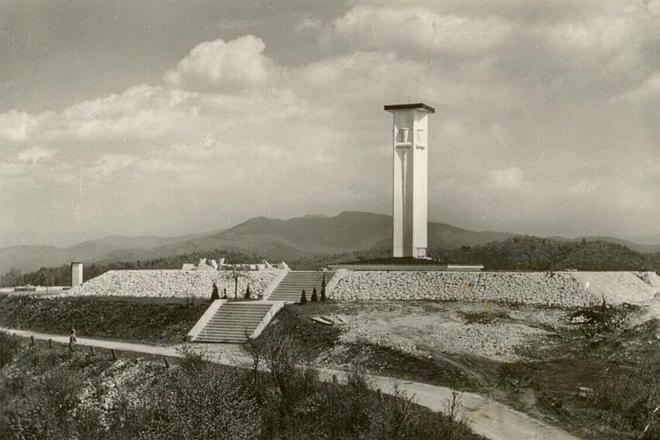THE SLOVAK National Uprising began on August 29, 1944. After it was suppressed by the German army two months later, partisan combatants shifted to guerrilla-style fighting. They launched attacks from inaccessible mountainous terrain until spring 1945, when the Germans were forced out of the territory by the Soviet Red Army.
Fighting in the mountains was particularly intense, as proven by the many monuments and grave sites of the victims of these clashes that are scattered all over the country. One of the biggest memorial complexes stands at Jankov Vŕšok, close to Bánovce nad Bebravou. It can be said that in this case, the size of the monument is proportional to the intensity of the fighting and human suffering that occurred.
The partisans were active in the surrounding mountains from the beginning of 1944. After the uprising was officially announced, they even managed to occupy Bánovce nad Bebravou, which must have enraged the Nazi-satellite government in Bratislava, given that Bánovce is where Slovakia’s wartime president, priest Jozef Tiso, had his parish residence. The town was heavily attacked by Germans, who conquered it on September 11, 1944.
Several partisan groups operated in the mountainous region around Bánovce. The biggest of these, Žižka’s Brigade, had as many as 1,600 members. The intense fighting took an increasing toll on local civilian inhabitants, who found themselves trapped: if they helped either of the two sides, the other side would retaliate against them. However, the locals usually aided the partisans.
When German soldiers and members of the fascist Hlinka Guard found out about locals supporting partisans, home-searches, interrogations and torture became a daily occurrence for civilians. One of the worst atrocities of the war occurred in Jankov Vŕšok, where seven wounded guerrillas, who were found in a bunker by members of the German SS, were tortured and burned to death.
The memorial complex in Jankov Vŕšok is the work of sculptor Jozef Pospíšil and architect Anton Slatinský. It was unveiled in 1951, but work on it continued for several more years. Everything was built without heavy machinery, as there was no electrical power or plumbing in Jankov Vŕšok at that time. This postcard dates back to the second half of the 1950s, probably shortly after it was completed.


